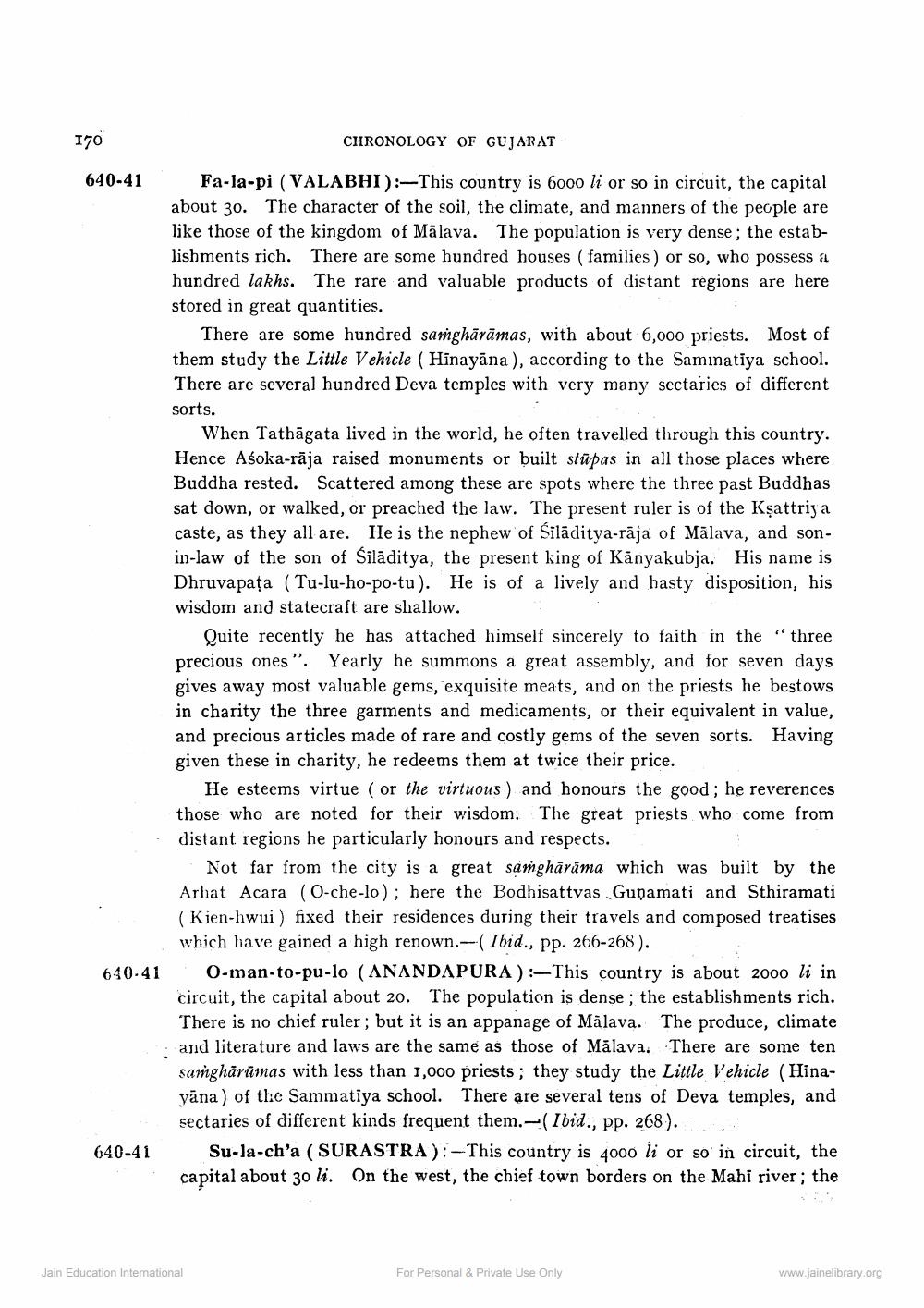________________
170
CHRONOLOGY OF GUJARAT
640-41 Fa-la-pi (VALABHI):—This country is 6000 li or so in circuit, the capital
about 30. The character of the soil, the climate, and manners of the people are like those of the kingdom of Mālava. The population is very dense; the establishments rich. There are some hundred houses (families) or so, who possess a hundred lakhs. The rare and valuable products of distant regions are here stored in great quantities.
There are some hundred samghārāmas, with about 6,000 priests. Most of them study the Little Vehicle (Hinayāna), according to the Saminatiya school. There are several hundred Deva temples with very many sectaries of different sorts.
When Tathāgata lived in the world, he often travelled through this country. Hence Aśoka-rāja raised monuments or built stūpas in all those places where Buddha rested. Scattered among these are spots where the three past Buddhas sat down, or walked, or preached the law. The present ruler is of the Kşattriya caste, as they all are. He is the nephew of Silāditya-rāja of Mālava, and sonin-law of the son of Silāditya, the present king of Kanyakubja. His name is Dhruvapata (Tu-lu-ho-po-tu). He is of a lively and hasty disposition, his wisdom and statecraft are shallow.
Quite recently he has attached himself sincerely to faith in the "three precious ones". Yearly he summons a great assembly, and for seven days gives away most valuable gems, exquisite meats, and on the priests he bestows in charity the three garments and medicaments, or their equivalent in value, and precious articles made of rare and costly gems of the seven sorts. Having given these in charity, he redeems them at twice their price.
He esteems virtue (or the virtuous ) and honours the good; he reverences those who are noted for their wisdom. The great priests who come from distant regions he particularly honours and respects.
Not far from the city is a great samghārāma which was built by the Arhat Acara (0-che-lo); here the Bodhisattvas Gunamati and Sthiramati (Kien-hwui) fixed their residences during their travels and composed treatises
which have gained a high renown.-( Ibid., pp. 266-268). 640-41 O-man-to-pu-lo (ANANDAPURA) :- This country is about 2000 li in
circuit, the capital about 20. The population is dense; the establishments rich. There is no chief ruler; but it is an appanage of Mālava. The produce, climate and literature and laws are the same as those of Mālava. There are some ten sanghārümas with less than 1,000 priests; they study the Little Vehicle (Hinayāna) of the Sammatiya school. There are several tens of Deva temples, and
sectaries of different kinds frequent them.-(Ibid., pp. 268). 640-41 Su-la-ch'a (SURASTRA):- This country is 4000 li or so in circuit, the
capital about 30 li. On the west, the chief town borders on the Mahi river; the
Jain Education Intemational
For Personal & Private Use Only
www.jainelibrary.org




